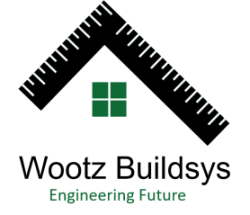In recent years, sustainability has become a cornerstone of modern architecture and construction. As we face the pressing challenges of climate change and environmental degradation, the construction industry is evolving to meet these demands. One of the most promising advancements in this field is the rise of Pre-Engineered Buildings (PEB). PEB manufacturers are at the forefront of this transformation, driving the future of sustainable building practices. This blog explores why PEB manufacturers are crucial in shaping a greener future for construction.
What Are PEB Manufacturers?
Before diving into why PEB manufacturers are pivotal to sustainable building, it’s essential to understand what they do. PEB manufacturers specialize in designing, fabricating, and assembling pre-engineered building systems. These systems are created using a combination of advanced engineering techniques and prefabricated components, which are then assembled on-site to create functional structures. The key benefits of PEBs include reduced construction time, lower labor costs, and greater design flexibility.
1. Efficiency in Material Usage
One of the primary reasons PEB manufacturers are leading the charge in sustainable building is their efficiency in material usage. Traditional construction methods often lead to substantial material waste, as components are cut and adjusted on-site. In contrast, PEB manufacturers use precise engineering and prefabrication techniques to minimize waste. By producing building components in a controlled factory environment, PEB manufacturers can optimize material use, reducing excess and ensuring that every piece is utilized effectively.
2. Reduced Construction Time
Time is a critical factor in construction, and PEB manufacturers excel in reducing construction time. Traditional building methods can take months or even years to complete. PEBs, on the other hand, are designed and pre-fabricated in advance, which significantly shortens on-site construction time. This reduction in construction time not only speeds up project completion but also minimizes the environmental impact associated with prolonged construction activities.
3. Energy Efficiency and Thermal Performance
PEB structures are renowned for their energy efficiency. The materials used in PEB construction, such as insulated panels and energy-efficient glazing, contribute to superior thermal performance. This means that buildings constructed with PEB systems require less energy for heating and cooling, leading to lower operational costs and reduced carbon footprints. PEB manufacturers often incorporate sustainable technologies, such as solar panels and green roofs, to further enhance the energy efficiency of their buildings.
4. Sustainability Through Reusability and Modularity
PEB systems offer remarkable flexibility due to their modular nature. Structures can be easily expanded, modified, or reconfigured without extensive demolition or reconstruction. This modularity supports the principles of sustainability by promoting the reuse and adaptation of existing buildings rather than starting from scratch. PEB manufacturers design structures with future adaptability in mind, allowing for modifications that align with changing needs and sustainability goals.
5. Lower Environmental Impact
The environmental impact of construction is a growing concern, and PEB manufacturers are addressing this issue head-on. By utilizing prefabricated components, PEB systems reduce the need for on-site construction activities, which decreases noise pollution, reduces waste, and minimizes disruption to the surrounding environment. Additionally, many PEB manufacturers use eco-friendly materials and processes, further contributing to the reduction of their environmental footprint.
6. Cost-Effectiveness
While sustainability is a key focus, cost-effectiveness remains a crucial consideration for many builders and developers. PEB manufacturers offer cost advantages through reduced construction time, lower labor costs, and efficient use of materials. The long-term savings associated with energy-efficient PEB structures also contribute to their cost-effectiveness. By choosing PEB systems, builders can achieve both sustainability and financial benefits.
7. Enhanced Safety Standards
PEB manufacturers prioritize safety in their designs and construction methods. Prefabrication in a controlled environment allows for rigorous quality control and adherence to safety standards. On-site assembly of PEB systems is typically quicker and involves fewer hazards compared to traditional construction methods. This emphasis on safety not only protects workers but also ensures the structural integrity of the building.
8. Global Applicability and Adaptability
PEB systems are versatile and can be adapted to various climatic conditions and geographical locations. This global applicability makes PEB manufacturers a valuable asset in sustainable building projects worldwide. Whether it’s a warehouse in a temperate zone or a manufacturing facility in a tropical climate, PEB systems can be customized to meet specific environmental requirements and performance standards.
9. Integration with Sustainable Technologies
Many PEB manufacturers are leading the way in integrating sustainable technologies into their designs. This includes the incorporation of renewable energy sources, such as solar panels and wind turbines, as well as advanced water conservation systems. By embracing these technologies, PEB manufacturers contribute to the creation of buildings that are not only sustainable but also self-sufficient in terms of energy and resource use.
10. Future-Ready Designs
PEB manufacturers are focused on future-ready designs that align with evolving sustainability standards and building codes. This forward-thinking approach ensures that PEB systems remain relevant and compliant with the latest regulations and best practices in sustainable construction. By investing in future-ready designs, PEB manufacturers help builders and developers stay ahead of trends and contribute to a more sustainable future.
Conclusion
PEB manufacturers are undeniably shaping the future of sustainable building. Their focus on efficient material usage, reduced construction time, energy efficiency, and adaptability positions them as leaders in the quest for greener construction practices. As the construction industry continues to evolve, the innovations and practices introduced by PEB manufacturers will play a crucial role in achieving sustainability goals and creating a more environmentally responsible future.
By understanding and embracing the benefits of PEB systems, builders, developers, and architects can contribute to a more sustainable construction industry while reaping the rewards of efficiency, cost-effectiveness, and reduced environmental impact. The future of building is here, and it’s being led by the pioneers of Pre-Engineered Buildings.
Frequently Asked Questions (FAQ’s)
Q 1: What are Pre-Engineered Buildings (PEBs)?
Pre-Engineered Buildings (PEBs) are prefabricated structures designed in a factory and assembled on-site. They use standardized components, reducing construction time and material waste.
Q 2: How do PEB manufacturers support sustainability?
PEB manufacturers promote sustainability by reducing material waste, shortening construction time, enhancing energy efficiency, and offering modular designs for adaptability.
Q 3: What environmental benefits do PEB systems offer?
PEB systems lower environmental impact by minimizing waste, reducing carbon footprints, and improving energy efficiency through advanced materials and designs.
Q 4: How do PEBs reduce construction costs?
PEBs cut costs by speeding up construction, minimizing material waste, and lowering long-term energy expenses through efficient designs.
Q 5: Can PEBs be customized for different climates?
Yes, PEBs can be tailored with insulation and weather-resistant features to suit various climatic conditions.
bandar togel rimbatoto jacktoto togel online toto togel toto togel situs toto situs toto situs toto situs slot situs toto slot gacor jacktoto slot online


